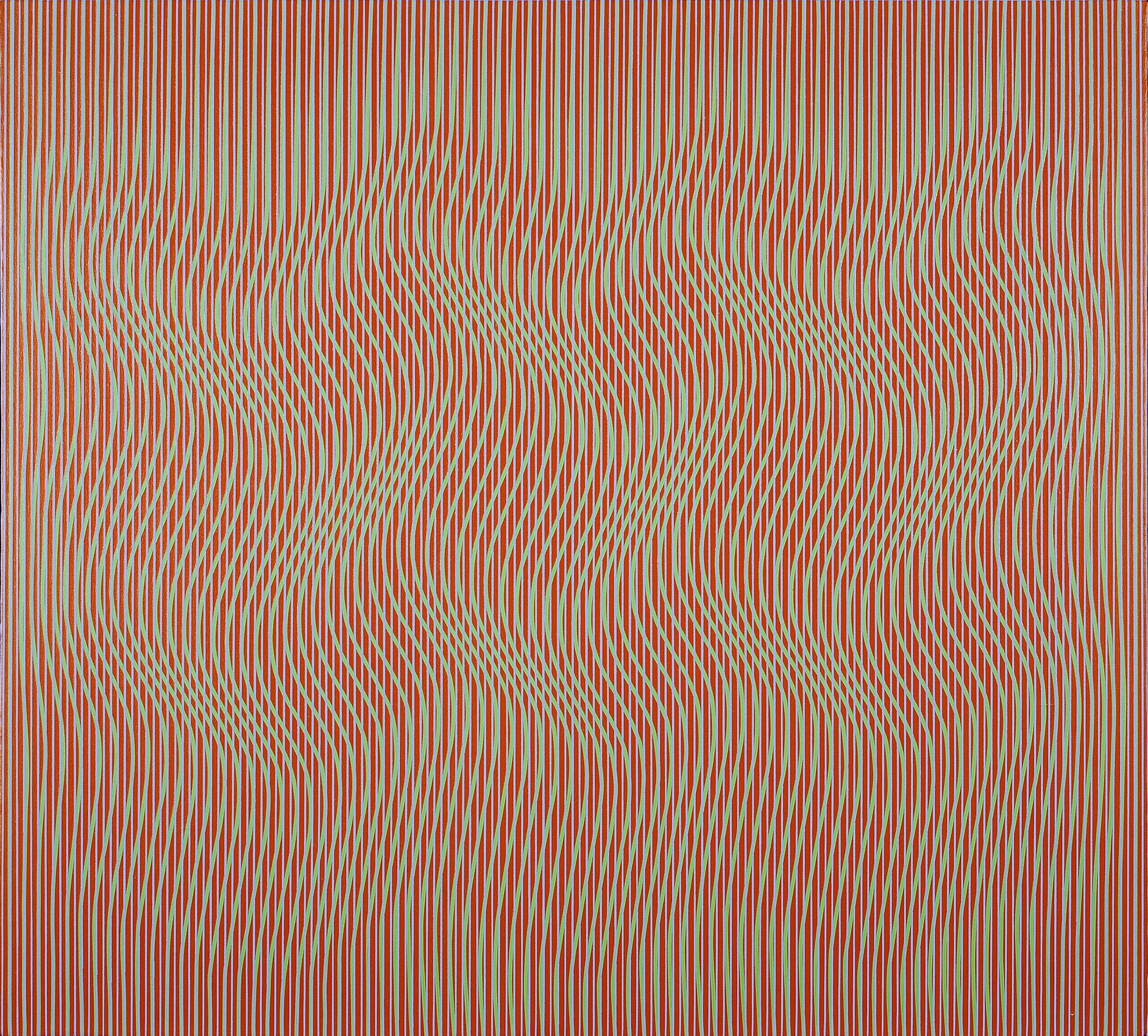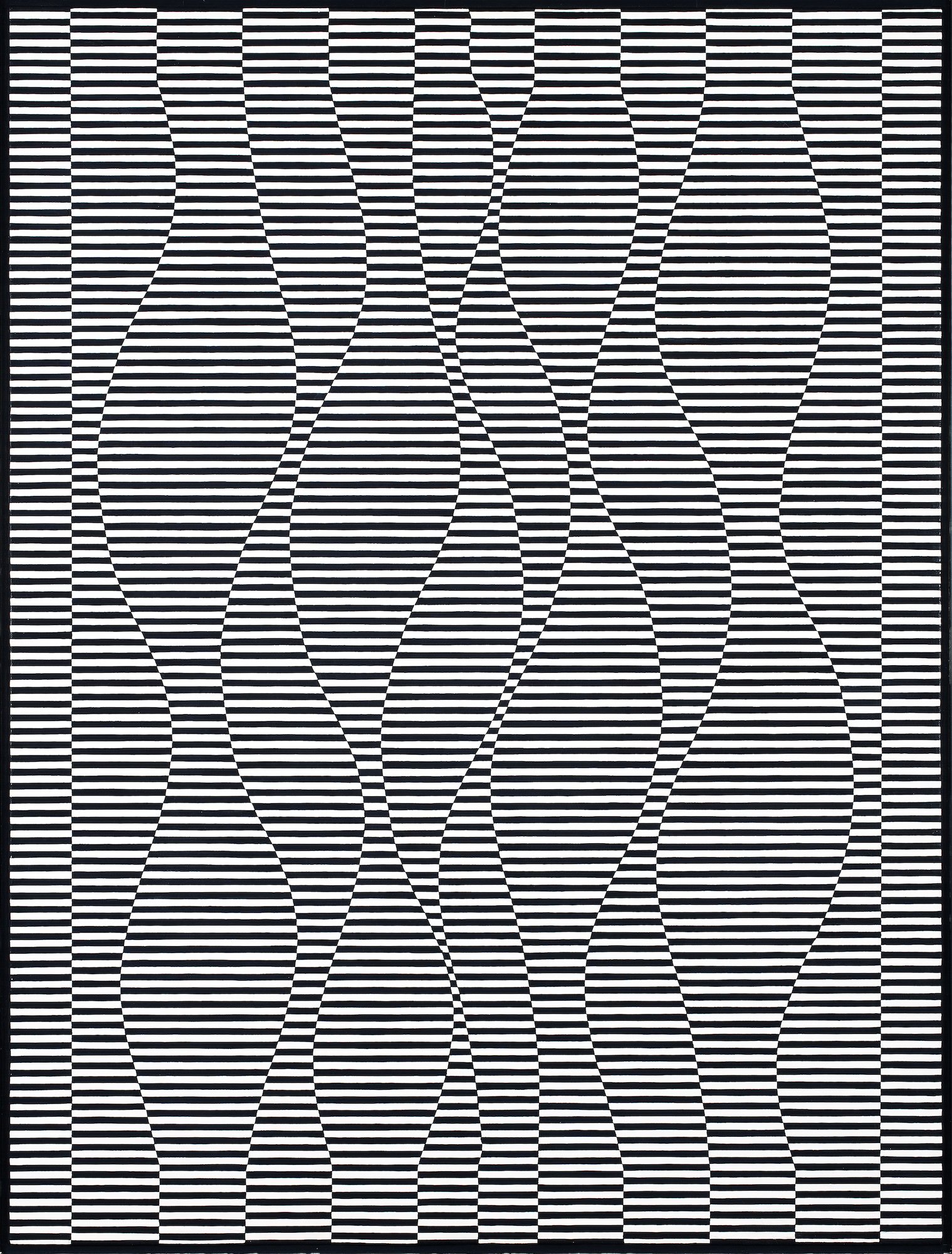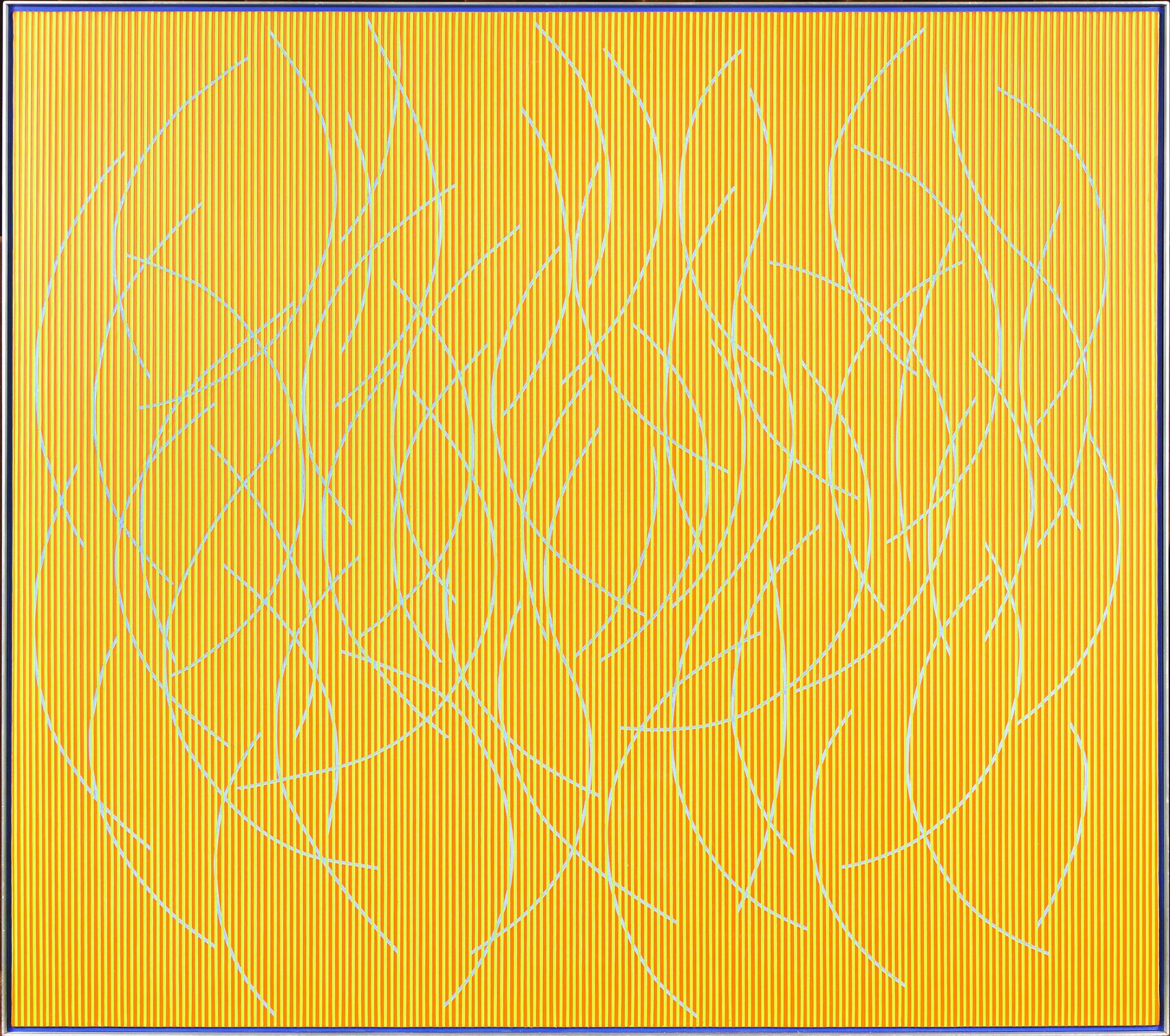JULIAN STANCZAK (1928-2017)
Available Work | Biography
Biography • Julian Stanczak (1928-2017)
Stanczak in his studio.
Julian Stanczak was born in eastern Poland in 1928. The Stanczak family was forced into a Siberian labor camp at the start of World War II where Julian lost the use of his right arm. In 1942 the Stanczak family escaped from Siberia, walking south until they met the Polish Army-in-Exile. Julian traveled with the Army-in-Exile through the Middle East and then joined his mother and sister in Persia. They were then moved to a Polish refugee camp in British Uganda, Africa where Julian received art lessons from a fellow refugee. In 1948 the family was reunited in Britain when Julian’s father finished his service with the Polish Second Corps. In London Julian studied art at the Borough Polytechnic for two years and visited the city’s galleries where he first experienced modern art. The Stanczak family moved to the United States in 1950, settling in Cleveland, Ohio. Julian enrolled at the Cleveland Institute of Art, from which he graduated in 1954.
Stanczak then went to Yale where he and his roommate Richard Anuszkiewicz studied with Josef Albers in the Bauhaus tradition. In 1956 Stanczak became an American citizen and completed his MFA at Yale. In 1957 he joined the teaching staff of the Art Academy of Cincinnati, where he worked for seven years. Stanczak’s work attracted attention in exhibitions at the Cincinnati Art Museum and the Cincinnati Contemporary Arts Center, where he received first prize in 1961. He received a solo exhibition at the Edgecliff Academy of Fine Arts in Cincinnati in 1963.
Stanczak moved to Cleveland in 1964 when he was appointed Professor of Painting at the Cleveland Institute of Art. The same year he received both first prize and the Purchase Award in the exhibition Artists of Southern Ohio at the Dayton Art Institute, which led the museum’s director to arrange a comprehensive exhibition of Stanczak’s paintings. New York art dealer Martha Jackson came to see the exhibition and arranged a solo exhibition of Stanczak’s work to open her gallery’s 1964-1965 season in September. The exhibition’s title, Julian Stanczak- Optical Paintings, led to the first printed use of “Op Art” to describe perceptual abstraction. The exhibition was so successful Stanczak was given 8 more solo exhibitions at the gallery from 1965 to 1973. Stanczak was represented by Martha Jackson until her death in 1969 and continued with the gallery when it was directed by her son through the 1970s.
1965 was another exciting year for Julian Stanczak. In addition to the Museum of Modern Art’s The Responsive Eye exhibition, he was included in a dozen solo and group exhibitions that year; including The Colorists, 1950-1965 at the San Francisco Museum of Art, California; Kinetic and Optical Art Today at the Albright-Knox Art Gallery, Buffalo, NY; and Vibrations Eleven at the Martha Jackson Gallery. In 1967 Stanczak was invited to exhibit at the Carnegie International and the Whitney Museum of American Art’s annual.
In 1968 Stanczak found a new development in his art. Using vertical lines, he painted forms that appeared as sharply folded veils suspended in space. These Folded Forms allowed Stanczak’s work even greater interpretation of the properties of light and transparency. During the 1968-1969 school term, Stanczak was artist-in-residence at Dartmouth College. He was awarded the Cleveland Arts Prize in 1969 for his contributions to Visual Art. The 1970 Carnegie International had a room devoted to Stanczak’s paintings. In 1972 Stanczak had a solo exhibition of paintings, serigraphs, and drawings at the Corcoran Gallery of Art in Washington, DC organized by its director, Gene Baro. Stanczak also had a solo exhibition at the Cincinnati Art Museum in 1972, followed by solo exhibitions at the Canton Art Institute in 1974 and the Butler Institute of American Art in Youngstown in 1980. Stanczak gave a lecture on “Parallels of the Temporal Element in the Visual and Audial Arts” in 1979 at MIT in a lecture series called Music and Related Fields.
Stanczak has continued to exhibit at galleries and museums. A monograph titled Julian Stanczak: Decades of Light was published in 1990 by the University at Buffalo, SUNY. In 1995 Stanczak retired from the Cleveland Institute of Art after 38 years of teaching. The following year, Stanczak’s work was exhibited with his fellow classmate Richard Anuszkiewicz and their teacher Josef Albers in the exhibition Color Function Painting at Wake Forest University Fine Arts Gallery in Winston-Salem, North Carolina.In 1998 the Butler Institute of American Art organized a retrospective exhibition with a catalogue of Stanczak’s work which traveled to the Columbus Museum of Art, Ohio and the Josef Albers Museum, Bottrop, Germany.
Recently Julian Stanczak’s paintings were included in Extreme Abstraction at the Albright-Knox Art Gallery in 2005; Sensory Overload: Light, Motion, Sound, and the Optical in Art Since 1945 at the Milwaukee Art Museum, Wisconsin in 2006; The Optic Nerve: Perceptual Art of the 1960s at the Columbus Museum of Art, Ohio in 2007, and CLE OP: Cleveland Op Art Pioneers, an exhibition of paintings from the Cleveland Museum of Art’s permanent collection in 2011. A major monograph in English and Polish, Julian Stanczak: Op Art and the Dynamics of Perception, was published in 2014.
Museums with Julian Stanczak's paintings, include: the Carnegie Museum of Art, Pittsburgh, PA; the Corcoran Gallery of Art, Washington, DC; the Cleveland Museum of Art, OH; the Hirshhorn Museum and Sculpture Garden, Washington, DC; the Museum of Modern Art, New York, NY; the National Gallery of Art, Washington, DC; the Pennsylvania Academy of the Fine Arts, Philadelphia, PA; the San Francisco Museum of Modern Art, California; and the Smithsonian American Art Museum, Washington, DC.
An extensive interview with the artist can be found on Geoform.




